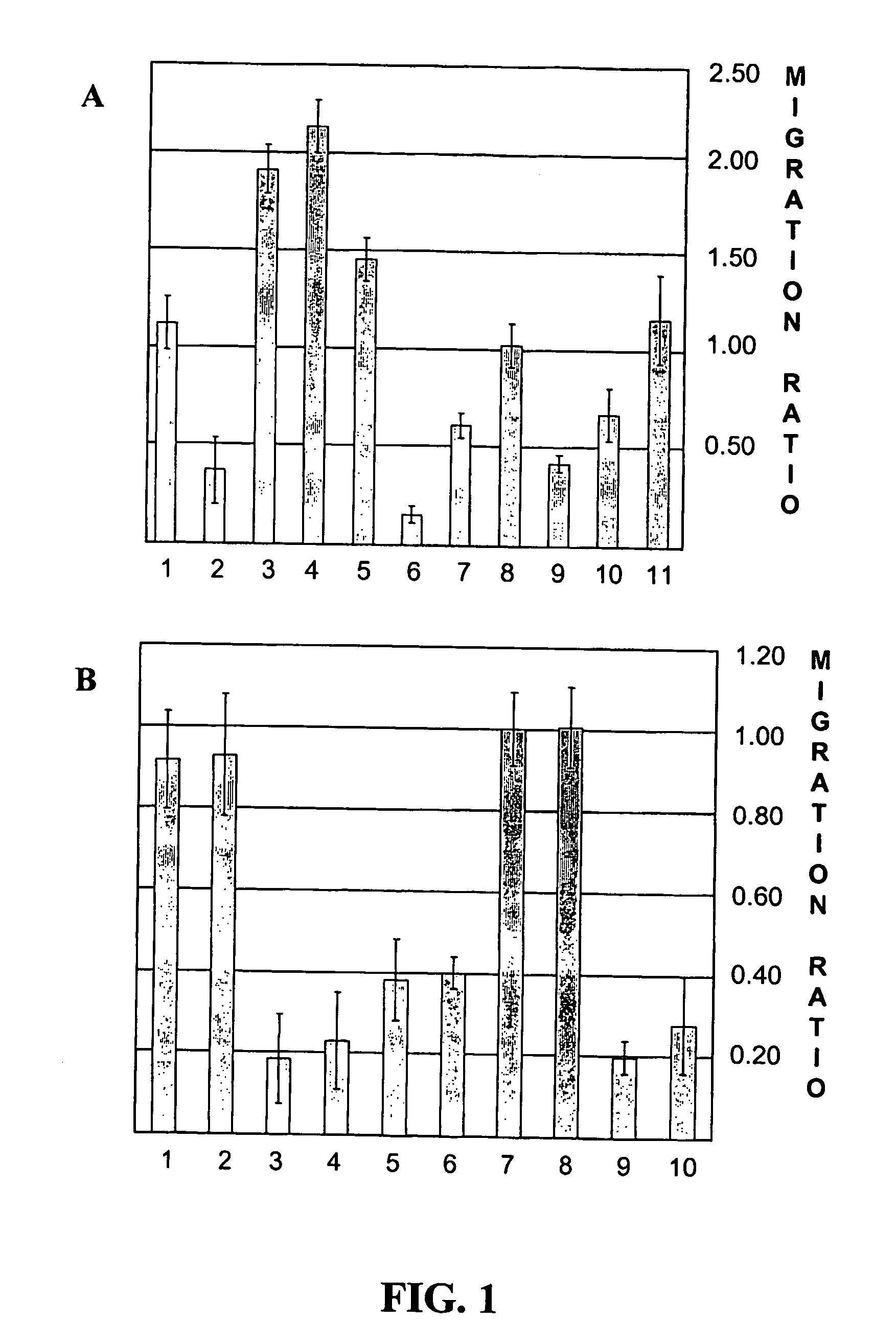Immunomodulatory agents for treatment of inflammatory diseases
a technology of immunomodulatory agents and inflammatory diseases, applied in the direction of peptides, cardiovascular disorders, drug compositions, etc., can solve the problems of unresolved important medical problems, uncontrolled or dysregulated inflammatory responses can be profoundly harmful, and the incidence rate has increased by almost 50 percent. , to achieve the effect of preventing the dimerization of the protein, and conferring oxidation resistance to the protein
- Summary
- Abstract
- Description
- Claims
- Application Information
AI Technical Summary
Benefits of technology
Problems solved by technology
Method used
Image
Examples
example 1
Recombinant Cytokines
[0106] Experiments were conducted with commercially available cytokines. S100A8 and S100A9 were initially purchased from BMA Biomedicals of Switzerland. The results from early experiments were corroborated with recombinant human S100 proteins produced in E. coli using a pGEX-2T GST vector according to standard protocols. The S100 proteins were kept at −20° C. in a solution consisting of 10 mM TRIS (pH 7.5), 0.1% cholate, 1 mM EDTA and 1 mM BME.
Mutant Human S100A8
[0107] The mutant human Ala42S100A8 protein was produced as a GST fusion protein in a bacterial expression system after using standard site-directed mutagenesis methods to substitute the Cysteine at position 42 with an Alanine. Details of the techniques have been described previously (See, Harrison et al., J Biol Chem, 274:8561-8569, 1999). In addition, the production of additional mutant human S100A8 proteins is contemplated. In particular, mutant human S100A8 proteins comprising lysine substitution...
example 2
Effect of Human S100A8 and S100A9 on Leukocyte Movement in Under-Agarose Migration Assays
[0110] The effects of human S100A8 and S100A9 and of a control chemokine (CCL2 / MCP1) on the movement of PM were first determined in an under-agarose migration system. The under-agarose migration assays were performed as previously described (Nelson et al., J Immunol, 115:1650-1656, 1975; and Foxman et al., J Cell Biol, 139:1349-1360, 1997). Peripheral monocytes (PM) were isolated on ficoll hypaque (Pharmacia) from blood drawn from healthy human volunteers and mixed with 10 to 20 units of sodium heparin. Cells were washed, re-suspended in PBS at a concentration of 200,000 cells / 10 μl, and their viability (>95%) was assessed with tryptan blue in a hemocytometer. Using a plexiglass template and a sterilized blunted stainless steel biopsy punch, three wells were equidistantly bored in 1.2% agarose (GibcoBRL) diluted 1:1 with RPMI with 10% heat-inactivated fetal calf serum. Agarose plugs were remove...
example 3
Effect of Human S100A8 and S100A9 on Leukocyte Movement in Transwell Migration Assays and by Video Microscopy
[0113] A mouse lymphocyte cell line (4DE4) stably expressing human CCR1 or CCR3 was used to precisely define the interactions between the S100 proteins and the CC chemokine receptors. As lymphocytes are immobile in under-agarose assays (Nelson et al., J Immunol, 115:1650-1656, 1975), transwell migration studies were performed with S100A8, S100A9, the CCR3 ligand eotaxin, and the CCR1-specific ligand MIP1α, with IL8 and MCP1 (Baggiolini et al., Int J Immunopharmacol, 17:103-108, 1995) as negative controls. Stable CCR1- and CCR3-transfectants, were kindly provided by Dr. James Pease from the Leukocyte Biology Section, Imperial College School of Medicine in London, UK. The parental 4DE4 cell line was kindly provided by Dr. Philip Murphy from the Laboratory of Host Defenses, NIAID, National Institutes of Health in Bethesda, Md. The cell lines were maintained in RPMI 1640, 10% FC...
PUM
| Property | Measurement | Unit |
|---|---|---|
| pH | aaaaa | aaaaa |
| oxidation resistance | aaaaa | aaaaa |
| swelling | aaaaa | aaaaa |
Abstract
Description
Claims
Application Information
 Login to View More
Login to View More - R&D
- Intellectual Property
- Life Sciences
- Materials
- Tech Scout
- Unparalleled Data Quality
- Higher Quality Content
- 60% Fewer Hallucinations
Browse by: Latest US Patents, China's latest patents, Technical Efficacy Thesaurus, Application Domain, Technology Topic, Popular Technical Reports.
© 2025 PatSnap. All rights reserved.Legal|Privacy policy|Modern Slavery Act Transparency Statement|Sitemap|About US| Contact US: help@patsnap.com



